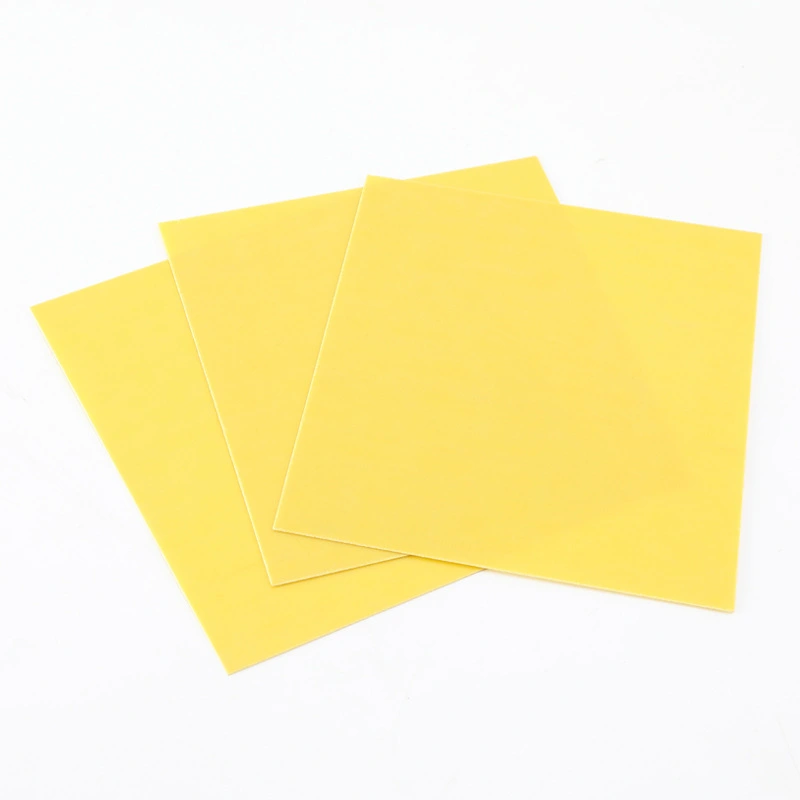What Causes Warping or Cracking During Installation?
Thermal Expansion and Contraction
3240 epoxy boards, like many materials, are susceptible to thermal expansion and contraction. When exposed to temperature fluctuations during installation, the board may warp or crack if not properly accounted for. This phenomenon occurs due to the material's coefficient of thermal expansion, which describes how much it changes in size with temperature variations. To mitigate this issue, installers should allow for adequate expansion gaps and use flexible mounting systems that can accommodate these dimensional changes.
Uneven Pressure Distribution
Another common cause of warping or cracking is uneven pressure distribution during the installation process. When mounting 3240 epoxy boards, it's crucial to apply pressure uniformly across the surface. Localized stress points can lead to deformation or fractures in the material. Utilizing proper clamping techniques and distributing the load evenly can help prevent these issues. Additionally, gradual tightening of fasteners in a cross-pattern sequence can ensure more uniform pressure application.
Improper Handling and Storage
The way 3240 epoxy boards are handled and stored before installation can significantly impact their integrity. Improper storage conditions, such as exposure to moisture or extreme temperatures, can compromise the material's structural properties. Moreover, mishandling during transportation or on-site can introduce micro-fractures or stress points that may lead to warping or cracking during installation. Implementing proper handling procedures and maintaining appropriate storage conditions are essential steps in preventing these issues.
Fastening Methods and Mounting Surface Compatibility
Selecting Appropriate Fasteners
Choosing the right fasteners is crucial for the successful installation of 3240 epoxy boards. The selected fasteners must be compatible with both the epoxy material and the mounting surface. Factors to consider include the chemical composition of the fasteners, their thermal expansion properties, and their ability to withstand the expected environmental conditions. Stainless steel or specialized plastic fasteners are often preferred due to their corrosion resistance and compatibility with epoxy materials. It's also important to consider the load-bearing requirements and select fasteners that can adequately support the weight and stress of the installation.
Surface Preparation Techniques
Proper surface preparation is essential for ensuring a strong and lasting bond between the 3240 epoxy board and the mounting surface. This process typically involves cleaning the surface to remove any dirt, grease, or contaminants that could interfere with adhesion. In some cases, roughening the surface may be necessary to increase the contact area and improve bonding strength. For metal surfaces, a light sanding or chemical etching process might be employed. When dealing with concrete or masonry surfaces, filling any cracks or voids and ensuring a level mounting area are crucial steps in the preparation process.
Adhesive Selection and Application
In addition to mechanical fasteners, adhesives often play a vital role in the installation of 3240 epoxy boards. Selecting the appropriate adhesive requires consideration of factors such as the type of mounting surface, environmental conditions, and the specific requirements of the application. Epoxy-based adhesives are frequently used due to their strong bonding properties and compatibility with the board material. However, other options like silicone-based or polyurethane adhesives might be more suitable in certain scenarios. Proper application techniques, including correct mixing ratios and curing times, are crucial for achieving optimal adhesion and preventing installation issues.
Preventative Measures for Mechanical and Thermal Stress
Implementing Stress Relief Techniques
To mitigate the effects of mechanical and thermal stress on 3240 epoxy boards, various stress relief techniques can be employed. One effective method is the use of flexible mounting systems that allow for slight movement and absorb vibrations. These systems can include rubber grommets, shock-absorbing washers, or specialized mounting brackets designed to accommodate thermal expansion. Another approach is to incorporate expansion joints or gaps in larger installations, allowing the material to expand and contract without building up internal stress. By implementing these stress relief measures, installers can significantly reduce the risk of warping, cracking, or other stress-related damage to the epoxy boards.
Environmental Control Strategies
Controlling the environmental conditions during and after installation is crucial for preventing stress-related issues in 3240 epoxy boards. Temperature and humidity fluctuations can have a significant impact on the material's behavior. Implementing climate control measures in the installation area, such as using temporary enclosures or scheduling work during optimal weather conditions, can help maintain a stable environment. Additionally, gradually acclimating the epoxy boards to the installation environment before mounting can reduce the risk of sudden stress-induced damage. For installations in areas with extreme temperature variations, considering the use of insulation or protective coatings can help mitigate thermal stress on the boards.
Regular Inspection and Maintenance Protocols
Establishing a routine inspection and maintenance protocol is essential for identifying and addressing potential stress-related issues before they escalate. Regular visual inspections can help detect early signs of warping, cracking, or delamination. Implementing a schedule for checking fastener tightness and adhesive integrity can prevent problems caused by loosening or degradation over time. In applications where the 3240 epoxy boards are exposed to harsh conditions or frequent thermal cycling, more frequent inspections may be necessary. By proactively addressing minor issues and maintaining the installation, the longevity and performance of the epoxy boards can be significantly improved.
Conclusion
Installing 3240 epoxy boards requires careful consideration of various factors to ensure optimal performance and longevity. By understanding the common installation issues and implementing preventative measures, installers can significantly reduce the risk of warping, cracking, and other problems. Proper fastening methods, surface preparation, and stress relief techniques are crucial elements of a successful installation. Regular maintenance and inspection further contribute to the long-term reliability of 3240 epoxy board installations. By following these guidelines and best practices, professionals can maximize the benefits of this versatile material in various electrical and industrial applications.
Contact Us
For more information about our 3240 epoxy boards and expert installation guidance, please contact us at info@jhd-material.com. Our team of experienced professionals is ready to assist you with your specific application needs and ensure the success of your installation projects.






